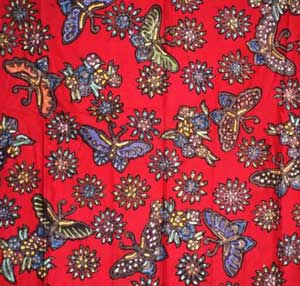If the material is in a good condition (no stain) it should be washed and rinsed using clean water about 3-5 times. On the contrary, if it is stained, it should be washed by using a liquid shampoo (a tablespoon for 3 liter) and then, dip it. Please don’t rub when washing and don’t use […]
Category Archives: About Batik
If the material is in a good condition (no stain) it should be washed and rinsed using clean water about 3-5 times. On the contrary, if it is stained, it should be washed by using a liquid shampoo (a tablespoon for 3 liter) and then, dip it. Please don’t rub when washing and don’t use […]
On the border of North Java, batik is called “batik pesisiran”. Historically, there are three types of batik pekalongan. The first ones, is local batik. It is made by using local style. The pattern doesn’t refer to princes’ rule, but it takes market progress by using the product sold out quickly. [frame src=”https://batiksfabric.com/wp-content/uploads/2013/12/encim.jpg” link=”” target=”_self” […]
Although the art form of batik is very intricate, the tools that are used are still very simple. The canting, believed to be a purely Javanese invention, is a small thin wall spouted copper container (sometimes called a wax pen) that is connected to a short bamboo handle. Normally it is approximately 11 cm. in […]
Although there are thousands of different batik designs, particular designs have traditionally been associated with traditional festivals and specific religious ceremonies. Previously, it was thought that certain cloth had mystical powers to ward off ill fortune, while other pieces could bring good luck. Certain batik designs are reserved for brides and bridegrooms as well as […]
- 1
- 2


